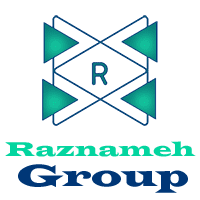Fixed price projects
It is called “money for the result, a model defining the service to be provided very accurately, and then sets a single price for the project, regardless of how much time and expense the supplier’s company incurs.
When is the model used?
Exact requirements, detailed specifications, strict deadlines for delivery. The customer knows what he will get at the end of the development period. It is ideal for projects with fixed requirements, budgets, and strict deadlines.
Customer advantages
- cThe fixed delivery time. The project plan is known.
- Warrpanty
- Minimum risks
Сustomer requirements
Exact specification. All changes to the specification are estimated and planned separately.
Supplier requirements
Exact estimation and Project Plan. Meeting the deadlines. Adequate Quality of Service.
How the work scope is defined?
The scope is set in the specification and is implemented in the project plan.
How the work costs are defined?
The price of the project is based on estimation and is a part of the commercial offer. Fees are based on the estimation model, personal rates, and risks.
Warranty and post-delivery support
The warranty period is for three months. During this period, all bugs should be fixed by the supplier for free. The specification is used as a baseline for identifying bugs. Post-delivery support should be carried according to a separate contract and is to be paid separately.
Time and material
They are also called “money for spent time & resources. The supplier provides specialists of a specific professional level, and the customer pays only for the time and resources spent on the project. In the case of partial workload, the minimum quota per month is set up, and terms of specialists’ availability influence on rates.
When the model is used?
No complete vision of the final product and no exact terms of delivery. Possibility for the creation of a work team with a specified workload. Paid min. Quota (for example, 50% of the usual month workload).
Ideal for Agile development methodologies. Suitable for projects developing MVPs, prototypes, or for teams that are part of remote customer teams.
Customer advantages
- Possibility to start with partially defined requirements
- Medium hourly rate
- Flexibility in work volumes
Сustomer requirements
Partial requirements. The adequate workload for the team(according to the minimum quota).
Supplier requirements
Rough estimation for planning. Adequate Quality of Service.
How the work scope is defined?
Upon agreement. Usually, work is set in the form of short user stories that might be made more precise during implementation. An approximate Project Plan and estimation can be provided as an orientation.
How the work costs are defined?
Daily rates for different specialists are agreed on upfront. At the end of each month, the supplier provides the customer with the invoice based on the amount of time and resources expended. Weekly reports on spent time are sent to the customer.
Warranty and post-delivery support?
No warranty is provided. The same resources provide Post-delivery support within the bounds of the T&M model.
Dedicated team
The supplier will build a team of resources according to customer project requirements. Payment is made according to allocated team time. The customer is responsible for providing an adequate workload to keep the dedicated team busy. The supplier offers estimates for planned work, but these estimates are used for planning, not price estimation, or invoicing.
When the model is used
No complete vision of the final product and no exact terms of delivery. Need for long-term expertise to focus on a fixed team. Assumed 100% of the workload, paid downtime.
Ideal for regular product development & support. Ideal for Agile development methodologies. Suitable for projects developing MVPs, prototypes, or for teams that are part of remote customer teams.
Customer advantages
- Fixed teams with a focus on one customer
- The lowest hourly rate among all models
- Full control & full availability of the team
- Collected expertise
Сustomer requirements
Preparing an adequate workload for the team.
Supplier requirements
Rough estimation for planning. Adequate Quality of Service.
How the work scope is defined?
Upon agreement. It can be set in an approximate Project Plan.
How the work costs are defined?
Monthly rates for different specialists are agreed on upfront. Payment is made upfront for the whole month of the team allocation. Weekly reports on spent time are sent to the customer.
Warranty and post-delivery support
No warranty is provided. The same resources provide Post-delivery support within the bounds of the dedicated team.
